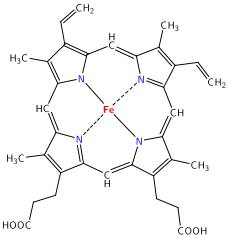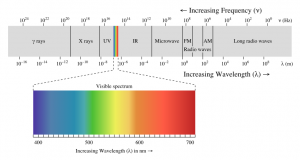I guess it hasn’t been all that long since I started practicing yoga at FlowYoga in Redmond, but the days of not being able to touch my toes are long gone. I can hold my own in the crow pose, but still find some of the bends a little over the top! That’s ok for I’ve always got tomorrow to give it another go.
Being a student for more than a year now has introduced me to the styles of a few different instructors, and I have to say that there are particular attributes that seem to stand out from the better instructors. Yet, better, is a relative term so I’d like to outline what I mean in a little more detail.
Yoga instructor characteristics that enhance the students experience.
Share within your personal space as if you’re hugging your students
Understanding your personal space is one thing, but opening yourself up and using that energy in your instruction makes for a great yoga instructor. The instructors that are not afraid to let students into their personal space when they are open and venerable allow for the yoga experience to go beyond the physical and into the emotional aspects of the practice.
This is different than simply approaching a student and making corrections in their posture. Any instructor can suggest a longer stance, or a lengthening, or some other alignment while still protecting their own personal space. But when this is done when the instructor’s personal space engulfs the student, the experience is felt in a very deep way.
What I’m talking about is probably more closely aligned with giving someone a hug. When you hug someone, the intent is to consciously open your personal space. When you do, who you are in the inside flows though and is felt in the emotional level of the receiver.
During yoga, when the physical body is pushed to the limit, the barriers, that people build in order to isolate themselves from the emotional effects of others, are softened. This is the exact time when emotional energies have the greatest impact. This is where a really good instructor can enhance a student’s yoga experience by consciously using the personal space to help release emotional blockages or enhance the flow of emotional energy.
To really make this effective, the instructor must be open at the time of merging. In other words, it is of no use to enter someone’s personal space if you’re going to keep the standard blocks up and active. Picture Mr. Spock approaching a student to make a correction. Sure, you can technically do this, but the experience is far from satisfying.
Thus, one trait of a really good yoga instructor is someone that makes themselves just a venerable as the students – yet knows that when they enter the student’s personal space they will be enhancing the student’s yoga experience in non-physical ways.
Make eye contact
As simple and difficult this task is, making eye contact shows attentiveness, openness and truthfulness. Every effort should be made to engage in this process and encourage the energy that it inspires.
Tell the student where he’s going
Yoga in a class setting is a process of shared energy. When the class performs in a synchronous fashion, the energy in the room becomes harmonious. It’s the instructors responsibility to direct the student into the correct postures through the correct sequence of moves. Setting the intention for a single move before any movement has occurred offers the opportunity to move the class in unison.
For instance, for down dog, the sequence “Lift your right leg towards the ceiling inhale, move your leg forward exhaling, drop your left heel down and inhale into warrior one” is harder to follow than “prepare for warrior one, inhale your right leg towards the ceiling, exhale your right foot forward, drop your left heel and inhale into your warrior.” Anyone that has done a warrior pose knows the basic sequence of moves, thus, if they know where they are going, they will get there with the breathing instructions from the master yogi.
Prepare the student for longer sequences
This same preparation holds for longer sequences. If you’re going to warm up with a Sun Salutation A, let it be known ahead of time so the students are not guessing exactly what will unfold and then follow the individual instructions that take you through the transitions.
It’s probably more important to prep the student, or set expectations, for more strenuous movements. For instance, if the sequence will involve three warriors, two side angles, a standing splits and three different folds all stressing the same key muscles, the instructor should set the sequence expectations ahead of time so that the student can make better decisions regarding alternative moves in the early part of the sequence. The idea is to lead through the strenuous sections to a relief pose that the student knows is coming. Someone will always work harder when they know when the rest is coming.
Prep movements with breathing
Breathing is where strength and art is found. Leading with “Inhale your arms out and up” works better than “arms out and up inhaling” or, “prepare to finish the sequence, inhale deeply… now exhale your feet forward …” which places the focus on moving in harmony with the breath.
Demonstrate where it’s visibly obvious
When demonstrating a new move or expressing the art in an existing move, it’s important to make yourself visible so the aspects of the move can be seen clearly. If the move is asymmetrical, demonstrate the movement once facing one direction and then when it’s actually performed by the class face the other direction. This way, body placements that might have been out of view the first time, are in view the second time.
More importantly, if you want to demonstrate a move to a specific individual, setup in their line of vision. For instance, if they are in down dog, lineup beside and slightly behind the person so that they can see as they make their next movements. Keep in mind that if they are going to open to the left, you should be on the left side so as they open, you’re straight in their view.
Touch
Words can get lost in translation, drowned out in music or simply spaced, but when you touch the muscles that should be worked there is absolutely no misunderstanding what is intended. This is also an easy way to confirm the student is following directions and performing the move adequately.
Be sensitive to all skill levels
It’s easy to be sensitive to the skill level of a beginning student. It’s more difficult to drive an advanced student. If the more advanced options are not provided during a standard practice, the experienced student may feel that the instructor has tailored the session towards advancing beginners rather than advancing everyone. Driving the advanced students will also provide motivation for the beginning students as they see the more advanced poses in action.
If it’s intimidating to instruct another instructor, especially if they have a skill set that is more practiced then the instructors, the instructor should step out of the demonstration instruction form of teaching into the assistance instruction technique. Guide the advanced student through the moves while they are under your close inspection to ensure that they follow instructions. Use touch to drive full participation.
Encourage an Om
Never skip the Om. Ever. And always balance out the class. If everyone faces forward, the instructor faces the class. If everyone faces each other, the instructor completes the circle. Encourage full participation for it helps set intention for the practice.
In a perfect world, all yoga classes would have perfect instructors. Unfortunately, it doesn’t happen that way and you don’t normally see students giving feedback with regards to what they like. I know that if I were instructing, I would keep this list of items top on my list to make sure that the students experience as much as they can in that hour they practice. Yet, more importantly, if I don’t provide this level of sensitivity, someone else will and the student will find that other teacher.
So far, it seems that most teachers don’t have these characteristics, or, they have never been asked to express them so they are hard to find. My door is open to a teacher of this caliber, thus this blog entry to place my wishes in writing.
May your practice be filled with instruction as outlined above.





